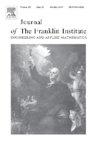具有二维空间扩散的持久驻留时间切换PDE系统的采样数据控制新视角
IF 4.2
3区 计算机科学
Q2 AUTOMATION & CONTROL SYSTEMS
Journal of The Franklin Institute-engineering and Applied Mathematics
Pub Date : 2025-09-20
DOI:10.1016/j.jfranklin.2025.108075
引用次数: 0
摘要
对于具有二维(2D)空间扩散和持续停留时间(PDT)切换规则的切换偏微分方程(PDE)系统,尽管其具有很强的科学和工程应用背景,但现有的研究很少关注采样数据控制。因此,本文针对二维空间中一类开关PDE系统,提出了一种新的采样数据控制方案。首先,为了准确描述系统的快慢切换现象,采用PDT切换规则对目标切换PDE系统进行建模。PDT开关规则的主要优点是能够克服驻留时间和平均驻留时间开关规则对开关频率的严格限制。此外,采用二维空间采样数据控制策略,将系统的连续状态z(t,x1,x2)采样为离散状态z(tk,x1,m ~,l2)和z(tk,l1,x2,m^),以实现系统的稳定。与分布式控制相比,这确保了系统的稳定性,同时降低了控制成本。然后,针对分析系统稳定性时由于切换和采样带来的异步困难,采用迭代、递归和等概率求和等方法,得到了保证闭环系统稳定性的充分条件。最后,通过两个仿真验证了所提方法的有效性。本文章由计算机程序翻译,如有差异,请以英文原文为准。
New perspective on sampled-data control for persistent dwell-time switched PDE systems with 2D spatial diffusion
Existing research has rarely focused on sampled-data control for switched partial differential equation (PDE) systems with two-dimensional (2D) spatial diffusion and a persistent dwell-time (PDT) switching rule, despite their strong application background in science and engineering. Therefore, a novel sampled-data control scheme for a class of switched PDE systems in 2D space is proposed in this paper. First, to accurately describe the fast and slow switching phenomena of the systems, PDT switching rule is used to model target switched PDE systems. The main advantage of PDT switching rule is being able to overcome the strict switching frequency limitations of dwell-time and average dwell-time switching rules. Moreover, a 2D spatial sampled-data control strategy, where the system’s continuous state is sampled as discrete states and , is employed to achieve system stabilization. This ensures system stability while reducing control costs compared to distributed control. Then, to address the asynchronous difficulties caused by switching and sampling when analyzing the systems’ stability, iteration, recursion, and equiprobable summation are used and sufficient conditions are obtained to ensure the closed-loop system’s stability. Finally, the effectiveness of the proposed method is verified through two simulations.
求助全文
通过发布文献求助,成功后即可免费获取论文全文。
去求助
来源期刊
CiteScore
7.30
自引率
14.60%
发文量
586
审稿时长
6.9 months
期刊介绍:
The Journal of The Franklin Institute has an established reputation for publishing high-quality papers in the field of engineering and applied mathematics. Its current focus is on control systems, complex networks and dynamic systems, signal processing and communications and their applications. All submitted papers are peer-reviewed. The Journal will publish original research papers and research review papers of substance. Papers and special focus issues are judged upon possible lasting value, which has been and continues to be the strength of the Journal of The Franklin Institute.

 求助内容:
求助内容: 应助结果提醒方式:
应助结果提醒方式:


